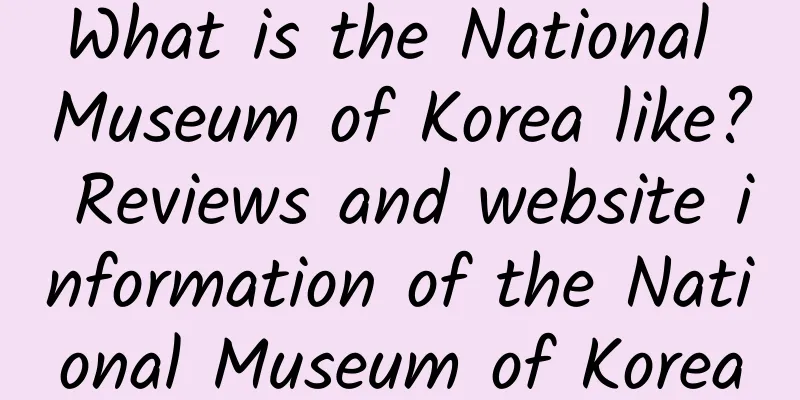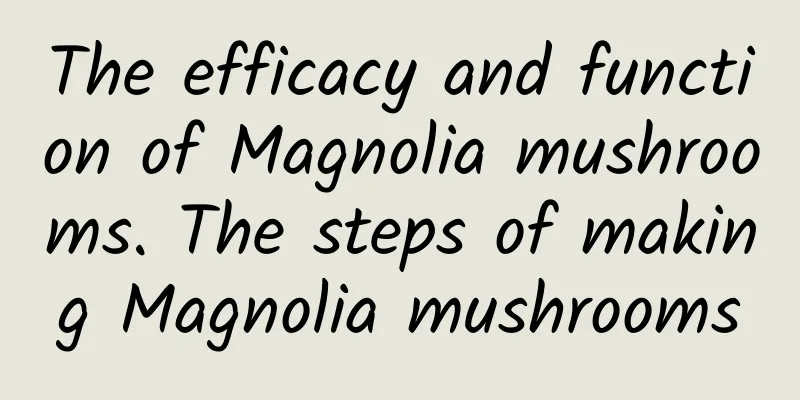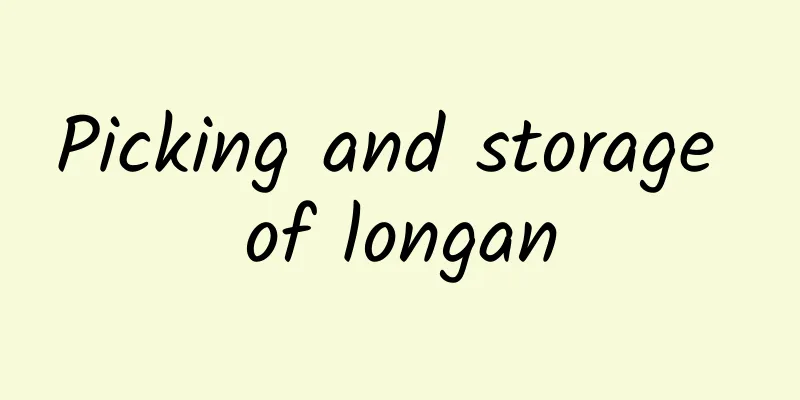What is the National Museum of Korea like? Reviews and website information of the National Museum of Korea

|
What is the website of the National Museum of Korea? The National Museum of Korea (국립중앙박물관, National Museum of Korea) is the central museum of the National Museum of Korea. It was established in 1945 and is located in Yongsan Family Park in Seoul. It has a collection of more than 220,000 pieces and is one of the most visited art museums in the world. Website: www.museum.go.kr The National Museum of Korea (국립중앙박물관) is one of the most representative cultural institutions in Korea. It not only carries the history and culture of Korea, but is also a world-renowned art museum. As the central museum of the National Museum of Korea, it has been committed to protecting, researching and displaying Korea's cultural heritage and promoting international cultural exchanges since its establishment in 1945. The museum is located in Yongsan Family Park in Seoul. It covers a large area and has a unique architectural style, making it one of the landmarks of Seoul. History and DevelopmentThe history of the National Museum of Korea can be traced back to 1945, when Korea was just liberated from Japanese colonial rule. The establishment of the museum marked Korea's independence and revival in the cultural field. Initially, the museum's collections mainly came from the Museum of the Governor-General of Korea and part of the collection of the Japanese royal family. With the rapid development of Korea's economy and the enhancement of cultural awareness, the museum's scale and influence have continued to expand. In 2005, the National Museum of Korea moved to its current location, Yongsan Family Park in Seoul. The design of the new museum combines modern architectural technology with traditional Korean aesthetics. The overall building is based on the concept of "open museum" and coexists harmoniously with the surrounding natural environment. The completion of the new museum not only provides the museum with a larger exhibition space, but also makes it an important window for the display of Korean culture. Collections and ExhibitionsThe National Museum of Korea has a collection of more than 220,000 items, covering a variety of cultural relics and artworks from prehistoric times to modern times. These collections include not only Korean cultural heritage, but also precious cultural relics from China, Japan, Central Asia and other places, fully reflecting Korea's important position in the East Asian cultural circle. The museum's exhibitions are divided into permanent exhibitions and special exhibitions. Permanent exhibitions include the Archaeology Hall, History Hall, Art Hall, Donation Hall, and Asia Hall, which comprehensively display Korea's history, culture, and artistic achievements. Special exhibitions are held regularly, focusing on specific themes or cultural phenomena, attracting a large number of domestic and foreign audiences. The Archaeology Museum exhibits artifacts from the Paleolithic Age to the Three Kingdoms Period, including stoneware, pottery, bronzeware, etc., showing the development of ancient Korean civilization. The History Museum tells the historical changes of Korea from the Unified Silla Era to the Joseon Dynasty through rich artifacts and documents. The Art Museum focuses on displaying traditional Korean paintings, calligraphy, ceramics and sculptures, reflecting Korea's unique aesthetic style and craftsmanship. Education and ResearchThe National Museum of Korea is not only a place for cultural exhibitions, but also a center for education and research. The museum has a dedicated education department that provides a variety of educational programs for visitors of different ages, including lectures, workshops, guided tours, etc. These activities aim to improve the public's cultural literacy, especially the younger generation's understanding and recognition of Korean history and art. In addition, the museum also has a research center dedicated to cultural relic restoration, archaeological excavation and cultural research. The research center maintains close cooperation with domestic and foreign academic institutions, promoting the internationalization of Korean cultural research. The museum also regularly publishes academic journals and research reports, providing valuable research materials for the academic community. International Exchange and CooperationAs one of the most visited art museums in the world, the National Museum of Korea plays an important role in international cultural exchange. The museum has established cooperative relationships with many well-known museums and cultural institutions around the world and regularly holds international exhibitions and cultural exchange activities. These activities not only showcase the cultural charm of Korea, but also promote understanding and dialogue between different cultures. For example, the museum has cooperated with the Louvre in France, the Metropolitan Museum of Art in the United States, the Palace Museum in China and other institutions to hold a series of high-level international exhibitions. These exhibitions attracted a large number of visitors and further enhanced the international influence of the National Museum of Korea. Buildings and FacilitiesThe architecture of the National Museum of Korea is a work of art in itself. The museum was designed by the famous Korean architect Seung Hyo-sang. The overall building is based on the concept of "open museum" and emphasizes harmonious coexistence with the natural environment. The building's appearance is simple and elegant, and the interior space is spacious and bright, providing visitors with a comfortable visiting experience. The main exhibition area of the museum is divided into three floors above ground and one underground floor. The three floors above ground display cultural relics in the fields of archaeology, history and art, while the underground floor houses a special exhibition hall and a multi-purpose hall. In addition, the museum also has facilities such as a library, an education center, a restaurant and a souvenir shop, providing a full range of services for visitors. The museum's external environment is equally amazing. The green trees, lakes and mountains of Longshan Family Park complement the museum's architecture, providing visitors with a tranquil and beautiful cultural space. The museum's square and garden also often host outdoor exhibitions and cultural activities, attracting a large number of citizens and tourists. Visiting InformationThe National Museum of Korea is open all year round, with visiting hours from 9am to 6pm from Tuesday to Sunday, and extended to 9pm on Wednesdays and Saturdays. The museum is free to the public, but special exhibitions may require additional tickets. Visitors can make an appointment in advance through the museum's official website to avoid waiting in line. The museum provides guided tours in multiple languages, including Korean, English, Chinese, Japanese, etc., to help international visitors better understand the exhibition content. In addition, the museum also has barrier-free facilities to provide convenience for visitors with limited mobility. Future OutlookThe future development goal of the National Museum of Korea is to build itself into a world-class museum and cultural center. To this end, the museum will continue to strengthen its collection, improve the level of exhibitions, and expand international exchanges and cooperation. At the same time, the museum will also increase the application of digital technology, through virtual exhibitions and online educational resources, so that more people can access and understand Korean culture. In addition, the museum plans to carry out more community activities to enhance interaction with the public and further enhance the museum's social influence. Through these efforts, the National Museum of Korea will continue to protect and pass on Korea's cultural heritage while making greater contributions to global cultural exchanges. ConclusionAs a symbol of Korean culture, the National Museum of Korea not only displays Korean history and art, but also promotes international cultural exchanges. Its rich collections, high-level exhibitions and quality services have attracted countless domestic and foreign visitors. In the future, the museum will continue to welcome cultural lovers from all over the world with an open and inclusive attitude, and become a cultural bridge connecting the past and the future, the East and the West. |
<<: How is the Zimbabwe Tourism Board? Zimbabwe Tourism Board Reviews and Website Information
>>: How is the German Voice? German Voice review and website information
Recommend
How to make delicious sea fish Common ways to eat sea fish
Marine fish is a common fish found in the deep se...
How is the German parrot? German parrot reviews and website information
What is the website of German Parrot? German Parro...
How is SBS Korea? Reviews and website information of SBS Korea
What is the Korean SBS website? Seoul Broadcasting...
The nutritional value, efficacy and function of egg yolk fruit
In our daily life, we are exposed to a lot of fru...
What is the Federal Reserve System like? Federal Reserve System reviews and website information
What is the Federal Reserve System? The Federal Re...
The benefits of drinking pear juice
Many people like to drink pear water. It tastes s...
The benefits and effects of soy milk
What do you eat for breakfast? Chinese breakfast ...
What fruits can help you lose weight quickly? Introduction to fruits that can help you lose weight quickly
Many women who love beauty have heard that eating...
What to do if eggplant fruit rots? How to prevent and treat eggplant fruit rot
How to prevent and treat eggplant rot? Today I wi...
Fish fillet instant noodle porridge
Fish fillet instant noodle porridge is the first ...
How to pickle wild garlic? Tips on how to pickle wild garlic
Wild garlic plays an important role in my country...
How to make rice cake and red bean soup
Rice cake is a traditional food, and rice cake so...
What to do if milk powder goes bad? How to store milk powder
The preservation of milk powder is very important...
How to grow keel flowers? Techniques for growing keel flowers
The keel flower has bright colors and a beautiful...
The nutritional value of walnuts What are the benefits of eating walnuts
Walnut, also known as walnut and Qiang peach, is ...









